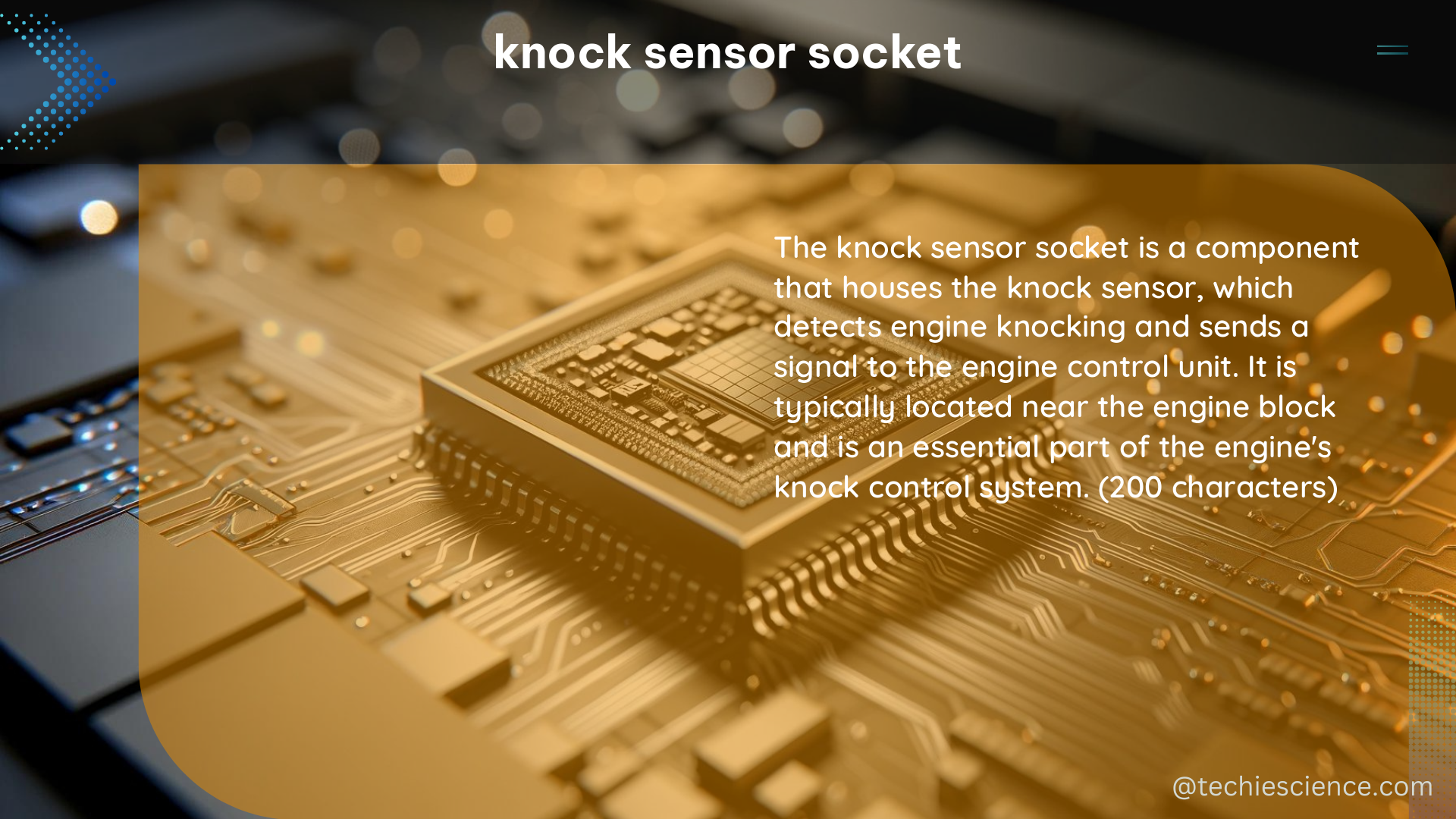Knock sensors, also known as knock detectors, are crucial components in modern internal combustion engines. They help prevent engine knocking or detonation, a condition that can cause significant engine damage. A knock sensor is typically a piezoelectric device that converts mechanical stress into electrical signals. These signals are then sent to the engine control unit (ECU), which adjusts the ignition timing to prevent engine knocking.
Understanding Knock Sensor Socket Sizes
The socket size for a knock sensor is usually 22mm, as reported in several online forums and discussions. However, the shape of the knock sensor may vary, and some sensors may require special sockets for proper installation and removal.
| Sensor Shape | Socket Type |
|---|---|
| Hexagonal | Hex Socket |
| Cylindrical | Deep Socket |
When replacing a knock sensor, it is essential to use the correct socket size and type to avoid damaging the sensor or the engine block. Using a socket that is too small may slip and cause damage to the sensor or the engine block, while using a socket that is too large may strip the sensor or the engine block.
Technical Specifications of Knock Sensors

In terms of technical specifications, a knock sensor typically has the following characteristics:
- Resistance Range: 5,000 to 20,000 ohms
- Sensitivity Range: 0.1 to 10 volts per g of acceleration
- Frequency Response Range: 10 to 20 kHz
- Amplifier: Some sensors may have a built-in amplifier to boost the signal strength and improve the signal-to-noise ratio.
These specifications are crucial for understanding the sensor’s performance and ensuring compatibility with the engine’s ECU.
Testing a Knock Sensor
To test a knock sensor, you can use a labscope or an oscilloscope to measure the sensor’s output voltage and frequency response. A healthy knock sensor should produce a clean and consistent signal that changes in response to engine knocking or other mechanical stresses.
When testing a knock sensor, pay attention to the following:
- Output Voltage: The sensor’s output voltage should be within the specified range, typically 0.1 to 10 volts per g of acceleration.
- Frequency Response: The sensor’s frequency response should be within the specified range, typically 10 to 20 kHz.
- Signal Consistency: The sensor’s signal should be clean and consistent, without any significant variations or noise.
If the sensor’s performance is outside the specified ranges or the signal is inconsistent, it may indicate a problem with the sensor and require replacement.
Knock Sensor Socket Removal and Installation
When removing or installing a knock sensor, it is crucial to use the correct socket size and type to avoid damaging the sensor or the engine block. Here are the steps to follow:
- Locate the knock sensor, which is typically located near the engine block or cylinder head.
- Determine the socket size and type required for the specific knock sensor. As mentioned earlier, the most common size is 22mm, but the shape may vary.
- Use the appropriate socket to carefully remove the knock sensor, taking care not to damage the sensor or the engine block.
- When installing the new knock sensor, ensure that the socket size and type match the sensor’s specifications.
- Tighten the sensor to the recommended torque specification, typically between 15 and 25 Nm (11 and 18 ft-lb).
- Reconnect any electrical connections and ensure the sensor is properly seated and secured.
Remember to always refer to the manufacturer’s instructions or a reliable service manual for the specific make and model of your vehicle to ensure the correct procedures are followed.
Conclusion
In summary, the knock sensor socket size is typically 22mm, but the shape of the sensor may vary, requiring different socket types. Understanding the technical specifications of knock sensors and following the proper removal and installation procedures are crucial to avoid damage and ensure the sensor’s proper function. By using the correct socket size and type, you can effectively maintain and troubleshoot your vehicle’s knock sensor system.
Reference:
- Farmingdale State College – CSC 311 Advanced Programming: https://www.farmingdale.edu/courses/index.shtml
- Silverado Sierra Forum – Need help with a socket size on knock sensor: https://www.silveradosierra.com/threads/need-help-with-a-socket-size-on-knock-sensor.159890/
- Honda-Tech Forum – Knock Sensor…what size socket??: https://honda-tech.com/forums/honda-prelude-4/knock-sensor-what-size-socket-1762613/
- LS1Tech Forum – Socket size for knock sensors?: https://ls1tech.com/forums/generation-iii-internal-engine/663534-socket-size-knock-sensors.html
- YouTube – How to test a knock sensor – GM (low power condition): https://www.youtube.com/watch?v=vqj2YWbedsc

The lambdageeks.com Core SME Team is a group of experienced subject matter experts from diverse scientific and technical fields including Physics, Chemistry, Technology,Electronics & Electrical Engineering, Automotive, Mechanical Engineering. Our team collaborates to create high-quality, well-researched articles on a wide range of science and technology topics for the lambdageeks.com website.
All Our Senior SME are having more than 7 Years of experience in the respective fields . They are either Working Industry Professionals or assocaited With different Universities. Refer Our Authors Page to get to know About our Core SMEs.